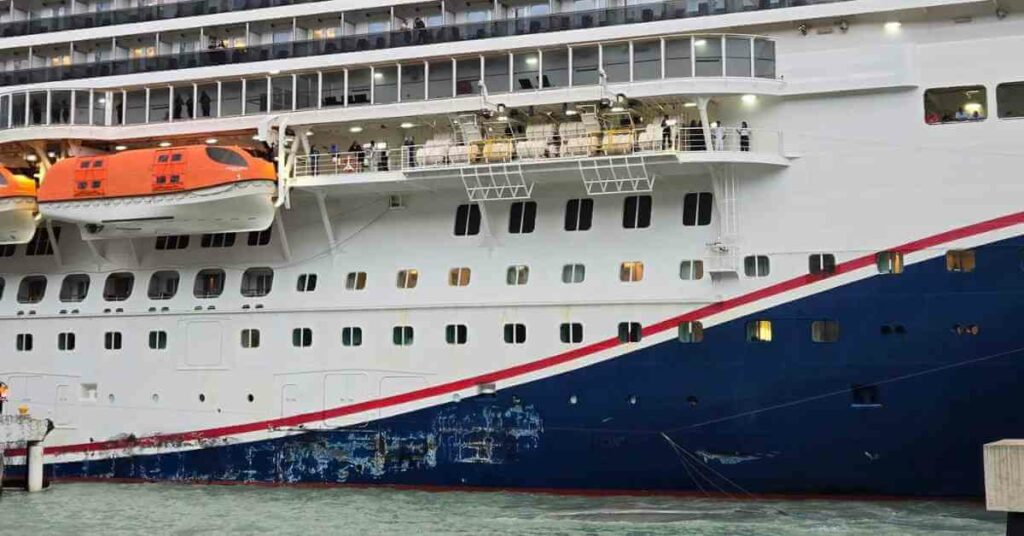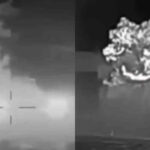Watch: LNG Ship Operations Explained
Carrying and handling liquefied gas cargo onboard ships poses significant potential hazards to the crew and the environment.
Each person working on a gas carrier and terminal ashore needs to understand the risks involved, obtain the necessary training and take all the needed precautions.
There is always a possibility of the presence of gas in the atmosphere, particularly:
- during the loading and discharging of liquefied gases
- when the ship is gassing-up or being gas-freed
- when a pipeline or cargo pump is opened up for maintenance
- in compressor rooms
- within ballast tanks and void spaces and double bottom tanks adjacent to cargo tanks
LNG, or liquefied natural gas, as the name suggests, is the liquid form of natural gas stored at a controlled temperature.
LNG carriers are specialised ships that transport LNG at its atmospheric pressure boiling point of approximately -162 degrees C.
Most cargo tanks are constructed from stainless steel, which is a material that retains its flexibility and strength characteristics over the temperature range between (-180ºC – 50ºC).
There are different types of LNG cargo tanks, and we will discuss two important types –
1. Membrane
The tank consists of very thin layers called membranes of special steel – INVAR. It minimally expands, and contracts, and the layer of steel is about 1mm thick. There is a second membrane providing a secondary barrier.
The space between these two layers has a plywood box filled with perlite insulation to support and insulate the tanks. Usually, these spaces are supplied with positive-pressure nitrogen.
2. Moss tank
The moss system uses spherical aluminium tanks that have a working pressure of 22 kPa (3.2Psi), which can be increased in case needed. They are self-supporting and are secured around the equatorial ring.
All pipes and equipment are carried in a central column.
There is a drip tray provided at the bottom to catch any leakages and avoid damage to the hull. Ballast is carried below and alongside the cargo hold.
Cargo Operation preparation
Usually, shore terminals and LNG tanker loading systems are linked by loading arms or by pipes.
All the flange connection details are checked and have valid certificates.
LNG is a cryogenic substance, and its main component is methane.
It gasifies violently when directly introduced into a cargo tank at ambient temperature, rapidly increasing the internal pressure of the cargo tank and making the atmosphere a flammable condition.
Inerting of Cargo Tanks
Before introducing cargo into the tanks, the moisture content and oxygen content in the tanks shall be reduced simultaneously.
Cargo tanks filled with air are dried and inerted with inert gas supplied by the inert gas generator on board.
Inert gas is led into the bottom of the cargo tank through the liquid filling line, and displaced air is vented to the atmosphere through the vapour line and the vent mast.
The dew point and oxygen content are periodically measured by a portable instrument at the sampling lines in the cargo tank dome.
Inerting of Annular Space for Moss-type vessels
The space between the surface of a cargo tank and insulation is called annular space.
Annular Space is inserted with nitrogen gas and continuously supplied from the N2 generator through the N2 bleed line
Inerting Inter Barrier Spaces (IBS) and Insulation Spaces (IS) for Membrane type vessels
The space between the primary and the secondary barrier is called inter-barrier space (IBS). The space between the secondary barrier and the inner hull is called insulation space (IS).
In normal operation, IBS and IS shall be purged with nitrogen.
During cargo loading, as normal procedure, IBS pressure is maintained at or below cargo tank pressure, and IS pressure is maintained at or above the IBS pressure.
Gassing-up
If the purging has been done with inert gas, the cargo tanks must be gassed up and cooled down when the vessel arrives at the loading terminal.
This is because inert gas contains about 14% carbon dioxide, which will freeze at around -60ºC and produce a white powder which can block valves, filters and nozzles.
During gassing up, the inert gas in the cargo tanks is replaced with warm LNG vapour. This is done to remove carbon dioxide and to complete the drying of the tanks.
Initial Cool Down
Cool down is an operation to pre-cool cargo tanks and lines required before taking on cryogenic LNG.
Cargo tank cooldown is carried out by spraying LNG through the spray nozzles of each cargo tank, using LNG received from the shore terminal.
Before LNG can be introduced into the cargo system of an LNG vessel, the system, and in particular the cargo tanks, have to be cooled down to a temperature close to that of the LNG which is to be loaded.
Cargo Operation
Air purge of loading arms
After the connection of the loading arms, air should be purged from the loading arms and the tips of manifold pipes.
N2 gas is led into the loading arms from injection lines connected to the arms and then pressurized up to about 4 to 6 kg/cm2G.
After pressurization, the ship’s liquid manifold vent valve and vapour manifold vent/drain valve are opened to release air and N2 gas into the atmosphere.
Loading Arms Cool Down
The cooldown of the loading arms is performed from the shoreside by the use of a small capacity pump.
At a discharge port, the arms are cooled down by sending in LNG by the ship’s spray pump.
Loading Operation
LNG is loaded via the loading manifolds to the liquid header and then to each tank filling line. The boil-off and displaced vapour leave each tank via the vapour suction to the vapour header.
The vapour is initially free-flowed to shore via the vapour crossover manifold, and as tank pressure rises, one compressor is brought into operation to increase the gas flow to shore and limit the vapour main and cargo tank pressure.
As the loading rate increases, it is important to monitor the tank pressures and start one HD compressor. If the compressors are unable to cope with the volume of boil-off and displaced gas, it will be necessary to reduce the loading rate.
It is important to maintain a water curtain below the loading pipes to avoid hull structure damage if there is any cargo leakage. The ice also needs to be washed off from LNG loading pipes.
Bulk loading
When all lines and valves are fully cooled, the vessel can commence ramping up the loading rate in the sequence agreed with the terminal.
Deballasting should be commenced in accordance with the cargo plan. The cargo should be evenly distributed during the loading.
BOG and Reliquification:
The Boil off gases during the loading operation is cooled down. This is done by using a reliquification plant.
BOG is removed from the cargo tanks by means of a two-stage centrifugal compressor.
The BOG is cooled and condensed to LNG in a cryogenic heat exchanger (cold box), which liquefies the BOG and returns the LNG back to the cargo tanks.
Precautions during cargo operations
- be vigilant at all times, especially during cargo operations and maintenance of cargo equipment
- If there is contact with toxic vapour or liquid, remove contaminated clothing immediately and wash with large quantities of water.
- Inform an officer
- do not eat, drink or smoke unless you have thoroughly washed
- always prevent hands from coming into contact with your mouth
- be sure you know where decontamination showers are located.
- Wear a protective suit and breathing apparatus when necessary
Disclaimer: The authors’ views expressed in this article do not necessarily reflect the views of Marine Insight. Data and charts, if used in the article, have been sourced from available information and have not been authenticated by any statutory authority. The author and Marine Insight do not claim it to be accurate nor accept any responsibility for the same. The views constitute only the opinions and do not constitute any guidelines or recommendations on any course of action to be followed by the reader.
The article or images cannot be reproduced, copied, shared or used in any form without the permission of the author and Marine Insight.
Do you have info to share with us ? Suggest a correction

About Author
Zahra is an alumna of Miranda House, University of Delhi. She is an avid writer, possessing immaculate research and editing skills. Author of several academic papers, she has also worked as a freelance writer, producing many technical, creative and marketing pieces. A true aesthete at heart, she loves books a little more than anything else.
Latest Videos Articles You Would Like:
- Cruise Ship Damaged Due To Severe Weather, Passengers Stuck Abroad
- Archaeologists Examine 19th-Century Shipwreck Found On Canadian Coast
- Australia Stops Livestock Ship From Sailing Around Africa To Israel Amidst Houthi Attacks
- Iran Warns U.S. Of Targeting Cargo Ships Following Latest Airstrikes On Houthis
- Watch: Ukrainian Forces Destroy Russian Missile Boat In Black Sea Operation
- Two Dead After Tragic Collision Between Water Taxi And Passenger Ferry In the Philippines
Subscribe To Our Newsletters
By subscribing, you agree to our Privacy Policy and may receive occasional deal communications; you can unsubscribe anytime.















